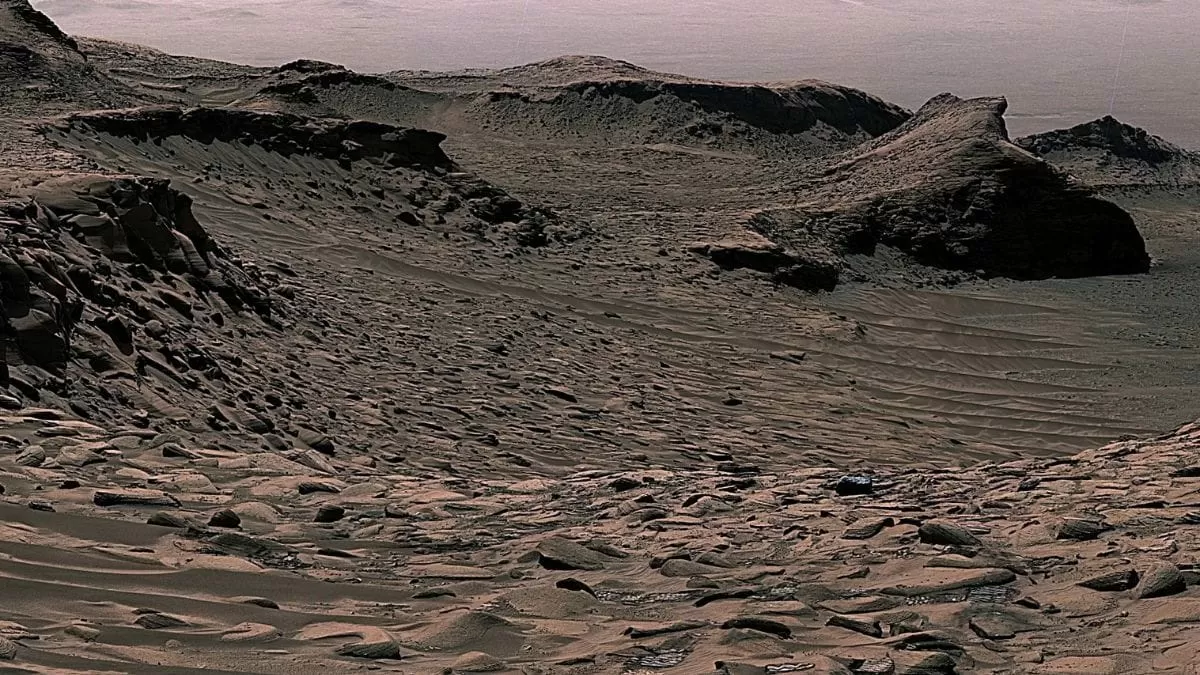NASA’s Curiosity rover has been on a mission to explore the surface of Mars since 2012, and it has made some groundbreaking discoveries in its journey. Its latest findings have the potential to unlock the mysteries of the ancient atmosphere and missing carbonates on the red planet, providing valuable insights into its past and present.
For years, scientists have been trying to understand the history of Mars and how it has evolved over time. One of the biggest questions has been about the planet’s atmosphere and the presence of carbonates, which are essential for supporting life. However, previous missions and studies have failed to provide concrete answers, leaving scientists puzzled.
But now, thanks to the data collected by NASA’s Curiosity rover, we may finally have some answers. The rover has been exploring an area on Mars called the Gale Crater, which was once a lake billions of years ago. This location provided a perfect opportunity for scientists to study the ancient atmosphere and the minerals that once existed in the water.
The research, published in the journal Science, reveals that the ancient atmosphere of Mars was much different from what it is today. It was thicker and had a higher concentration of carbon dioxide, which is a key ingredient for the formation of carbonates. This finding sheds light on why the planet’s atmosphere changed over time and why carbonates are scarce on its surface.
According to the study, the planet’s atmosphere was more than twice as thick as it is now, and it had a significant amount of carbon dioxide. This thick atmosphere would have created a greenhouse effect, trapping heat and increasing the temperature on Mars. This warmer climate would have supported liquid water on the planet, making it more habitable in the past.
However, as the atmosphere gradually thinned over time, the planet’s surface cooled down, and the liquid water dried up. This explains the lack of carbonates on the surface of Mars today, as they would have either dissolved in the water or been buried under layers of dust and sediment.
The data collected by Curiosity also revealed that the ancient lake in the Gale Crater had a neutral pH, which is similar to Earth’s oceans. This is significant because it means that the water could have been hospitable to life, providing a possible habitat for microbes to thrive.
Furthermore, the rover also discovered clay minerals in the lake bed, which are formed in the presence of water and are known to preserve organic compounds. This discovery adds to the growing evidence that Mars may have once been a habitable planet, and it raises the possibility of finding signs of ancient life on its surface.
The findings from Curiosity’s mission have opened a new chapter in our understanding of Mars and its potential for supporting life. It has also provided valuable insights into the planet’s past and how it has evolved over time. This information is crucial for future missions to Mars and for our quest to find answers about the origins of life in our solar system.
But the mission of Curiosity is far from over. The rover is still exploring the Gale Crater and collecting more data, which will help scientists to further unravel the mysteries of the red planet. It is equipped with advanced instruments and technology that allow it to analyze samples of rock and soil, providing a wealth of information about Mars’ history and geology.
As we continue to uncover the secrets of Mars, the mission of Curiosity serves as a reminder of humanity’s curiosity and determination to explore the unknown. It is a testament to the incredible capabilities of NASA and its scientists, who have made this mission possible and continue to push the boundaries of space exploration.
In conclusion, NASA’s Curiosity rover has potentially ended the mystery of the ancient atmosphere and missing carbonates on Mars. Its research has uncovered the reasons behind the planet’s temperature and how it has supported liquid water in the past. The discoveries made by the rover have shed new light on the red planet and have brought us one step closer to understanding its past and potential for life. The future of Mars exploration looks promising, and we can’t wait to see what other secrets this fascinating planet holds.

